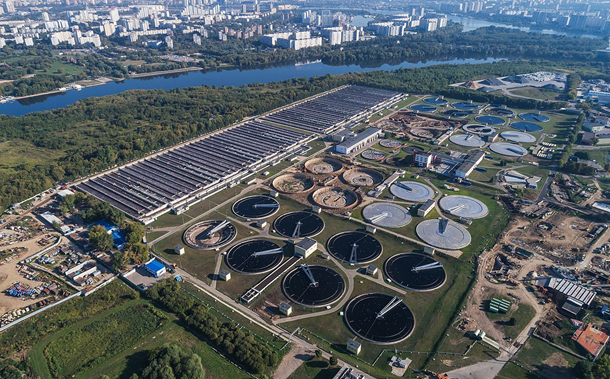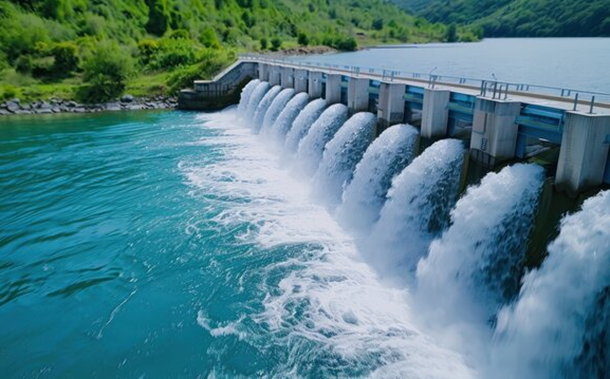Sensor Layout Design for Structural Health Monitoring
Downloads
Doi:10.28991/CEJ-2024-010-12-011
Full Text:PDF
Downloads
[2] Shi, Q., Wang, X., Chen, W., & Hu, K. (2020). Optimal Sensor Placement Method Considering the Importance of Structural Performance Degradation for the Allowable Loadings for Damage Identification. Applied Mathematical Modelling, 86, 384–403. doi:10.1016/j.apm.2020.05.021.
[3] Tan, Y., & Zhang, L. (2020). Computational methodologies for optimal sensor placement in structural health monitoring: A review. Structural Health Monitoring, 19(4), 1287–1308. doi:10.1177/1475921719877579.
[4] BŠ‚achowski, B., Ostrowski, M., Tauzowski, P., Swiercz, A., & Jankowski, Š. (2020). Sensor placement for structural damage identification by means of topology optimization. AIP Conference Proceedings, 2239, 20002. doi:10.1063/5.0007817.
[5] Lee, E.-T., & Eun, H.-C. (2021). Optimal sensor placements using modified Fisher information matrix and effective information algorithm. International Journal of Distributed Sensor Networks, 17(6), 155014772110230. doi:10.1177/15501477211023022.
[6] Lee, E. T., & Eun, H. C. (2022). Optimal Sensor Placement in Reduced-Order Models Using Modal Constraint Conditions. Sensors, 22(2). doi:10.3390/s22020589.
[7] Gomes, G. F., de Almeida, F. A., da Silva Lopes Alexandrino, P., da Cunha, S. S., de Sousa, B. S., & Ancelotti, A. C. (2019). A multiobjective sensor placement optimization for SHM systems considering Fisher information matrix and mode shape interpolation. Engineering with Computers, 35(2), 519–535. doi:10.1007/s00366-018-0613-7.
[8] Sun, H., & Büyüköztürk, O. (2015). Optimal sensor placement in structural health monitoring using discrete optimization. Smart Materials and Structures, 24(12), 125034. doi:10.1088/0964-1726/24/12/125034.
[9] Kammer, D. C. (1991). Sensor placement for on-orbit modal identification and correlation of large space structures. Journal of Guidance, Control, and Dynamics, 14(2), 251–259. doi:10.2514/3.20635.
[10] Friswell, M. I., & Castro-Triguero, R. (2015). Clustering of sensor locations using the effective independence method. AIAA Journal, 53(5), 1388–1390. doi:10.2514/1.J053503.
[11] Castro-Triguero, R., Murugan, S., Friswell, M.I., & Gallego, R. (2013). Optimal Sensor Placement for Structures Under Parametric Uncertainty. Topics in Dynamics of Bridges, Volume 3. Conference Proceedings of the Society for Experimental Mechanics Series. Springer, New York, United States. doi:10.1007/978-1-4614-6519-5_14.
[12] Gonen, S., Demirlioglu, K., & Erduran, E. (2023). Optimal sensor placement for structural parameter identification of bridges with modeling uncertainties. Engineering Structures, 292(1), 116561. doi:10.1016/j.engstruct.2023.116561.
[13] Penny, J. E. T., Friswell, M. I., & Garvey, S. D. (1994). Automatic choice of measurement locations for dynamic testing. AIAA Journal, 32(2), 407–414. doi:10.2514/3.11998.
[14] Lu, L. L., Wang, X., & Huang, C. G. (2013). A new method of optimal sensor placement for modal identification of offshore platform structure. Proceedings of the 2013 World Congress on Advances in Structural Engineering and Mechanics, 8-12 September, 2013, Jeju, Korea.
[15] Mercer, J. F., Aglietti, G. S., & Kiley, A. M. (2016). Model reduction and sensor placement methods for finite element model correlation. AIAA Journal, 54(12), 3941–3955. doi:10.2514/1.J054976.
[16] He, C., Xing, J., Li, J., Yang, Q., Wang, R., & Zhang, X. (2015). A new optimal sensor placement strategy based on modified modal assurance criterion and improved adaptive genetic algorithm for structural health monitoring. Mathematical Problems in Engineering, 2015. doi:10.1155/2015/626342.
[17] Fu, Y., & Yu, L. (2012). Optimal sensor placement based on MAC and SPGA algorithms. Advanced Materials Research, 594–597, 1118–1122. doi:10.4028/www.scientific.net/AMR.594-597.1118.
[18] Brehm, M., Zabel, V., & Bucher, C. (2010). An automatic mode pairing strategy using an enhanced modal assurance criterion based on modal strain energies. Journal of Sound and Vibration, 329(25), 5375–5392. doi:10.1016/j.jsv.2010.07.006.
[19] Coote, J. E., Lieven, N. A. J., & Skingle, G. W. (2005). Sensor placement optimisation for modal testing of a helicopter fuselage. Proceedings of the 24th International Modal Analysis Conference (IMAC-XXIII), 30 January - 2 February, St. Louis, United States.
[20] Cha, Y. J., & Buyukozturk, O. (2015). Structural damage detection using modal strain energy and hybrid multiobjective optimization. Computer-Aided Civil and Infrastructure Engineering, 30(5), 347–358. doi:10.1111/mice.12122.
[21] Hu, H., & Wu, C. (2009). Development of scanning damage index for the damage detection of plate structures using modal strain energy method. Mechanical Systems and Signal Processing, 23(2), 274–287. doi:10.1016/j.ymssp.2008.05.001.
[22] Shi, Z. Y., Law, S. S., & Zhang, L. M. (1998). Structural damage localization from modal strain energy change. Journal of Sound and Vibration, 218(5), 825–844. doi:10.1006/jsvi.1998.1878.
[23] Seyedpoor, S. M. (2012). A two stage method for structural damage detection using a modal strain energy based index and particle swarm optimization. International Journal of Non-Linear Mechanics, 47(1), 1–8. doi:10.1016/j.ijnonlinmec.2011.07.011.
[24] Pal, J., & Banerjee, S. (2015). A combined modal strain energy and particle swarm optimization for health monitoring of structures. Journal of Civil Structural Health Monitoring, 5(4), 353–363. doi:10.1007/s13349-015-0106-y.
[25] Zhang, Z., Peng, C., Wang, G., Ju, Z., & Ma, L. (2023). Optimal sensor placement for strain sensing of a beam of high-speed EMU. Journal of Sound and Vibration, 542(6), 117359. doi:10.1016/j.jsv.2022.117359.
[26] Liu, W., Gao, W., Sun, Y., & Xu, M. (2008). Optimal sensor placement for spatial lattice structure based on genetic algorithms. Journal of Sound and Vibration, 317(1–2), 175–189. doi:10.1016/j.jsv.2008.03.026.
[27] Zheng, H., Yan, Q., Hu, J., & Chen, Z. (2012). Optimal sensors placement based on modal strain energy. Applied Mechanics and Materials, 166–169, 1164–1169. doi:10.4028/www.scientific.net/AMM.166-169.1164.
[28] Seyedpoor, S. M., Yahyapour, R., Mofdi, A. A., & Fallahian, S. (2024). Structural damage identification through an optimal sensor placement approach and the modal strain energy-based index. Journal of Rehabilitation in Civil Engineering, 12(1), 126-143. doi:10.22075/JRCE.2023.29823.1805.
[29] Salama, M., Rose, T., & Garba, J. (1987). Optimal placement of excitations and sensors for verification of large dynamical systems. Proceedings of the 28th Structures. Structural Dynamics, and Materials Conference. doi:10.2514/6.1987-782.
[30] Li, D. S., Li, H. N., & Fritzen, C. P. (2007). The connection between effective independence and modal kinetic energy methods for sensor placement. Journal of Sound and Vibration, 305(4–5), 945–955. doi:10.1016/j.jsv.2007.05.004.
[31] Nicoletti, V., Quarchioni, S., Amico, L., & Gara, F. (2024). Assessment of different optimal sensor placement methods for dynamic monitoring of civil structures and infrastructures. Structure and Infrastructure Engineering, 1-16. doi:10.1080/15732479.2024.2383299.
[32] Wang, Y., Chen, Y., Yao, Y., & Ou, J. (2023). Advancements in Optimal Sensor Placement for Enhanced Structural Health Monitoring: Current Insights and Future Prospects. Buildings, 13(12), 3129. doi:10.3390/buildings13123129.
[33] Hassani, S., & Dackermann, U. (2023). A Systematic Review of Optimization Algorithms for Structural Health Monitoring and Optimal Sensor Placement. Sensors, 23(6), 3293. doi:10.3390/s23063293.
[34] Mghazli, M.O., Zoubir, Z., Elmankibi, M., & Lamdouar, N. (2024). Comparison of Optimal Sensor Placement Technics for Structural Health Monitoring Application. Proceedings of 5th International Conference on Civil Engineering and Architecture. ICCEA 2022. Lecture Notes in Civil Engineering, 369, Springer, Singapore. doi:10.1007/978-981-99-4049-3_38.
[35] Fan, X. (2021). Advances in Optimal Sensor Placement for Structural Health Monitoring. 2021 4th International Symposium on Traffic Transportation and Civil Architecture (ISTTCA), 12-14 November, 2021, Suzhou, China.
[36] Tang, K., Xu, S., Yang, Y., Kong, H., & Ma, Y. (2024). Optimal Sensor Placement Using Combinations of Hybrid Measurements for Source Localization. 2024 IEEE Radar Conference (RadarConf24), 1–6. doi:10.1109/radarconf2458775.2024.10548509.
[37] Saeed, S., Sajid, S. H., & Chouinard, L. (2024). Optimal Sensor Placement for Enhanced Efficiency in Structural Health Monitoring of Medium-Rise Buildings. Sensors, 24(17), 5687. doi:10.3390/s24175687.
- Authors retain all copyrights. It is noticeable that authors will not be forced to sign any copyright transfer agreements.
- This work (including HTML and PDF Files) is licensed under a Creative Commons Attribution 4.0 International License.![]()














